T-5 minutes – The strongback structure beside the rocket is moving back to its launch position.
Month: April 2015
Falcon 9 on Internal Power
The Falcon 9’s two stages are operating on their own batteries now through the flight.
First Stage Engines Chilling Down
The nine Merlin engines on the first stage are being chilled down in anticipation of the super-cold liquid oxygen that will circulate through the pipes at launch.
Terminal Phase of Countdown Begins
Today’s countdown has entered its final phase. LIftoff remains on schedule for 4:10 p.m.
SpaceX Poll Confirms: ‘Go for Launch’
With neither technical nor weather concerns showing, the SpaceX launch team confirmed the Falcon 9 rocket and Dragon spacecraft are ready to launch on time at 4:10 p.m.
‘Cone of Concern’ Remains Clear
T-15 minutes and the weather remains green this afternoon. An area near the launch site dubbed the cone of concern shows no weather violations nearing the zone where they could halt the countdown.
The Control Rooms for CRS-6
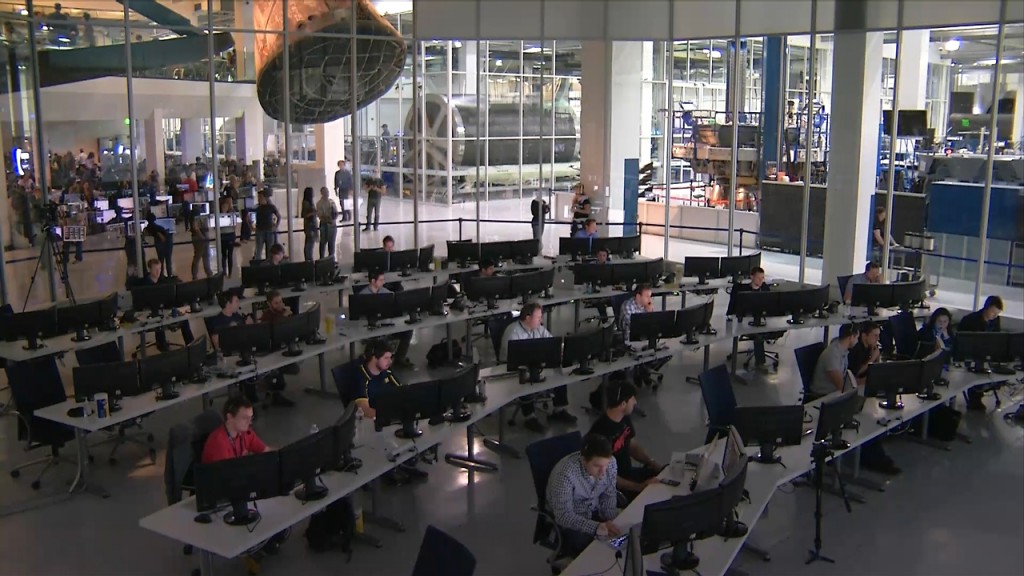
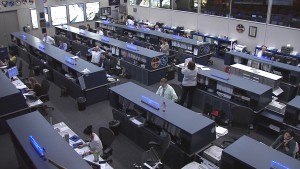
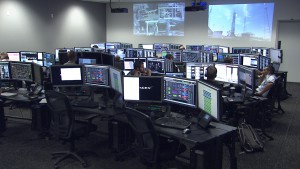 SpaceX is running today’s CRS-6 launch and ascent into orbit from the company’s headquarters in Hawthorne, California, top, and with a launch team at Cape Canaveral, bottom.
SpaceX is running today’s CRS-6 launch and ascent into orbit from the company’s headquarters in Hawthorne, California, top, and with a launch team at Cape Canaveral, bottom.
NASA is also overseeing the mission from the International Space Station control room at Mission Control in Houston, Texas.
All the teams work closely together throughout the countdown and during the climb into orbit. SpaceX and NASA also work together for the all-important capture and berthing two days after launch when the Dragon nears the station so the astronauts there can grab it with the robotic arm and move it to a docking port on the station.
T-30 Minutes and Everything is ‘Go’
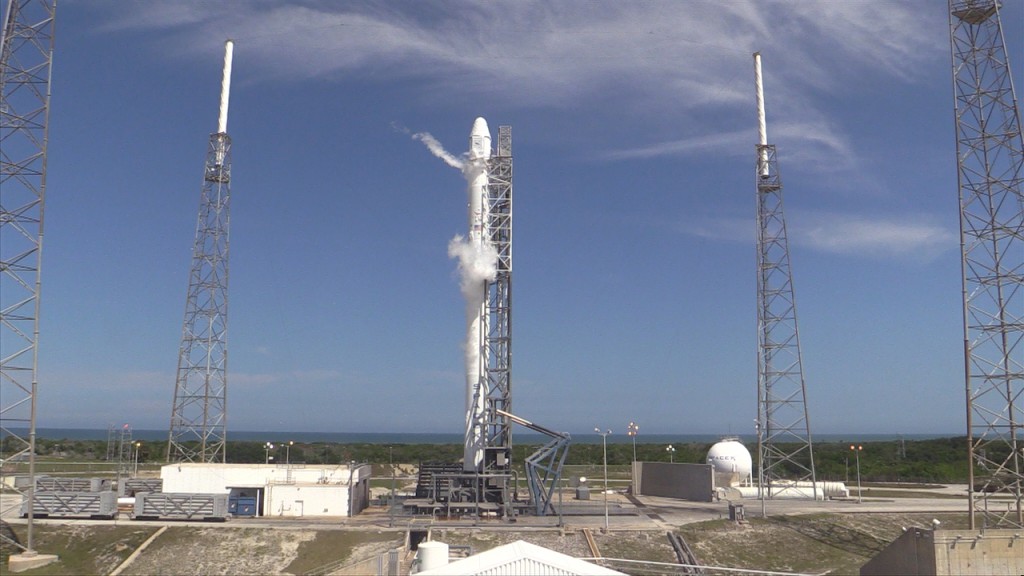 The launch team at Cape Canaveral Air Force Station in Florida continues working through its steps methodically as we tick toward a liftoff at 4:10 p.m. of the SpaceX Falcon 9 and Dragon spacecraft. Thirty minutes to go before the latest cargo flight to the International Space Station commences.
The launch team at Cape Canaveral Air Force Station in Florida continues working through its steps methodically as we tick toward a liftoff at 4:10 p.m. of the SpaceX Falcon 9 and Dragon spacecraft. Thirty minutes to go before the latest cargo flight to the International Space Station commences.
At Space Launch Complex 40, where the Falcon and Dragon stand ready for space, the cryogenic liquid oxygen tanks continue to be topped off as small portions of the super-cold propellant evaporate during the last minutes of the countdown. The Merlin engines mix liquid oxygen with refined kerosene to generate the thrust needed to lift the rocket and its payload about 250 miles into space at a speed of about 17,500 mph to meet the station.
Falcon 9 and Dragon by the Numbers
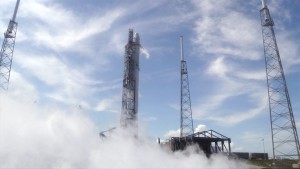 Named for the Millennium Falcon of Star Wars fame, the SpaceX Falcon 9 is the booster that sends the Dragon spacecraft , loaded with cargo and experiments, into orbit.
Named for the Millennium Falcon of Star Wars fame, the SpaceX Falcon 9 is the booster that sends the Dragon spacecraft , loaded with cargo and experiments, into orbit.
The Falcon 9 and Dragon combination measures 208-feet-tall and is 12 feet in diameter. The first stage is powered by nine Merlin 1D engines that produce 1.3 million pounds of thrust at liftoff. The first stage engines burn for about three minutes to push the Dragon out of the atmosphere. The second stage of the Falcon is powered by a single Merlin 1D engine. It places Dragon in its final orbital trajectory to catch up to the International Space Station.
After the second stage separates, small thrusters on the Dragon make adjustments to the orbit to steer the spacecraft into a position where the station’s robotic arm can capture the spacecraft and connect it to the orbiting laboratory.
CRS-6 a Key Player in Station Science
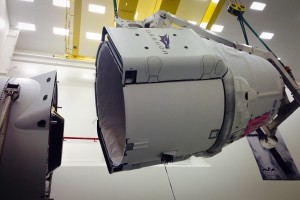
Among the Dragon’s cargo are materials that will contribute to 40 of the experiments that the crew members of Expeditions 43 and 44 will conduct, including astronaut Scott Kelly, who recently began a yearlong mission on the International Space Station. The studies cover the effects of radiation on cells, fluid shifts in astronauts and the weakening of muscles and bone loss in microgravity. All the work has potential applications for people on Earth and astronauts who will make a journey to Mars.
